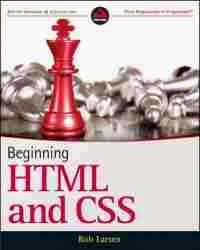In computing, C (/ˈsiː/, as in the letter C) is a general-purpose programming language initially developed by Dennis Ritchie between 1969 and 1973 at AT&T Bell Labs.Like most imperative languages in the ALGOL tradition, C has facilities for structured programming and allows lexical variable scope and recursion, while a static type system prevents many unintended operations. Its design provides constructs that map efficiently to typical machine instructions, and therefore it has found lasting use in applications that had formerly been coded in assembly language, most notably system software like the Unix computer operating system.
C is one of the most widely used programming languages of all time,and C compilers are available for the majority of available computer architectures and operating systems.
Many later languages have borrowed directly or indirectly from C, including C#, D, Go, Rust, Java, JavaScript, Limbo, LPC, Objective-C, Perl, PHP, Python, Verilog (hardware description language)[3] and Unix's C shell. The most pervasive influence on these languages (excluding Python) has been syntactical, and they tend to combine the recognizable expression and statement syntax of C with underlying type systems, data models, and semantics that can be radically different. C++ and Objective-C started as compilers that generated C code; C++ is currently nearly a superset of C, while Objective-C is a strict superset of C.
Before there was an official standard for C, many users and implementors relied on an informal specification contained in a book by Dennis Ritchie and Brian Kernighan; that version is generally referred to as "K&R" C. In 1989 the American National Standards Institute published a standard for C (generally called "ANSI C" or "C89"). The next year, the same specification was approved by the International Organization for Standardization as an international standard (generally called "C90"). ISO later released an extension to the internationalization support of the standard in 1995, and a revised standard (known as "C99") in 1999. The current version of the standard (now known as "C11") was approved in December 2011.
Ever wished you could learn C from a book? Head First C provides a complete learning experience for C and structured imperative programming. With a unique method that goes beyond syntax and how-to manuals, this guide not only teaches you the language, it helps you understand how to be a great programmer. You'll learn key areas such as language basics, pointers and pointer arithmetic, and dynamic memory management. Advanced topics include multi-threading and network programming - topics typically covered on a college-level course.
We think your time is too valuable to waste struggling with new concepts. Using the latest research in cognitive science and learning theory to craft a multi-sensory learning experience, Head First C uses a visually rich format designed for the way your brain works, not a text-heavy approach that puts you to sleep.
Download Head First C
Read More
C is one of the most widely used programming languages of all time,and C compilers are available for the majority of available computer architectures and operating systems.
Many later languages have borrowed directly or indirectly from C, including C#, D, Go, Rust, Java, JavaScript, Limbo, LPC, Objective-C, Perl, PHP, Python, Verilog (hardware description language)[3] and Unix's C shell. The most pervasive influence on these languages (excluding Python) has been syntactical, and they tend to combine the recognizable expression and statement syntax of C with underlying type systems, data models, and semantics that can be radically different. C++ and Objective-C started as compilers that generated C code; C++ is currently nearly a superset of C, while Objective-C is a strict superset of C.
Before there was an official standard for C, many users and implementors relied on an informal specification contained in a book by Dennis Ritchie and Brian Kernighan; that version is generally referred to as "K&R" C. In 1989 the American National Standards Institute published a standard for C (generally called "ANSI C" or "C89"). The next year, the same specification was approved by the International Organization for Standardization as an international standard (generally called "C90"). ISO later released an extension to the internationalization support of the standard in 1995, and a revised standard (known as "C99") in 1999. The current version of the standard (now known as "C11") was approved in December 2011.
Ever wished you could learn C from a book? Head First C provides a complete learning experience for C and structured imperative programming. With a unique method that goes beyond syntax and how-to manuals, this guide not only teaches you the language, it helps you understand how to be a great programmer. You'll learn key areas such as language basics, pointers and pointer arithmetic, and dynamic memory management. Advanced topics include multi-threading and network programming - topics typically covered on a college-level course.
We think your time is too valuable to waste struggling with new concepts. Using the latest research in cognitive science and learning theory to craft a multi-sensory learning experience, Head First C uses a visually rich format designed for the way your brain works, not a text-heavy approach that puts you to sleep.
Download Head First C




















